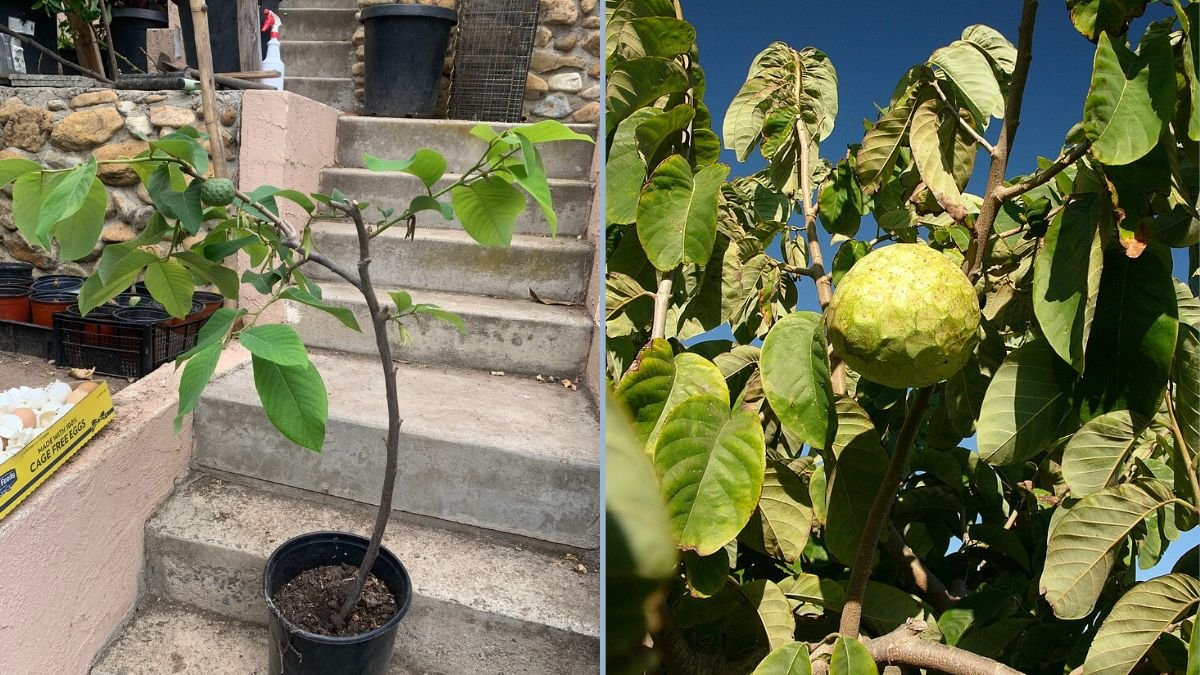Cherimoya, also known as custard apple (Annona cherimola), is a tropical and subtropical fruit tree celebrated for its creamy, sweet, and aromatic fruit. Often referred to as the “ice cream fruit,” cherimoya is enjoyed fresh or in desserts, juices, and smoothies. While cherimoya trees are usually propagated through grafting for commercial purposes, growing them from seeds is a simple, cost-effective, and rewarding method for home gardeners.
This comprehensive guide will walk you through custard apple seed germination, from selecting seeds to planting and caring for cherimoya seedlings, making the process easy and highly successful.
Why Grow Cherimoya from Seed?
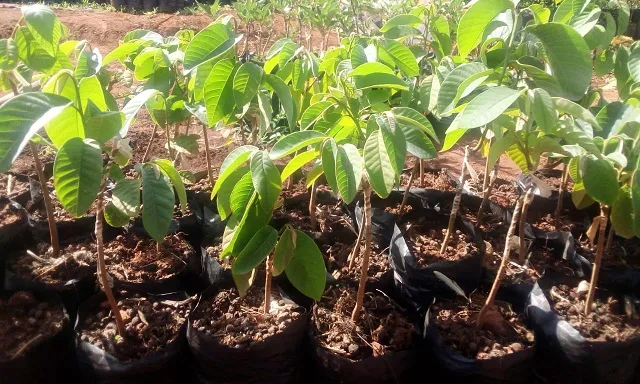
Growing cherimoya from seed has several advantages:
- Cost-effective: Seeds are inexpensive compared to buying saplings or grafted plants.
- Educational: Watching a tree grow from seed provides insight into plant biology and horticulture.
- Adaptability: Seed-grown trees adapt well to local soil and climate conditions.
- Availability: Seeds can be collected from mature fruits easily, making propagation accessible.
While seed-grown cherimoya trees take longer to bear fruit than grafted trees, they offer the satisfaction of nurturing a tree from scratch.
Step 1: Selecting Custard Apple Seeds
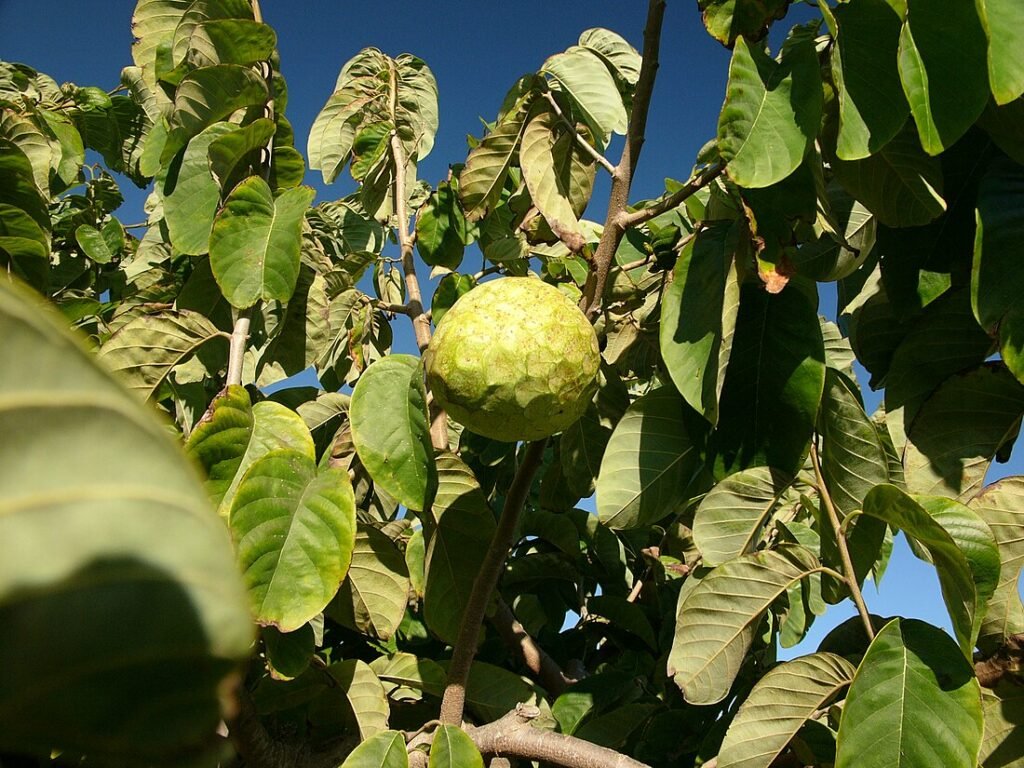
The first step in successful germination is selecting viable seeds:
- Choose mature fruits: Pick fully ripe custard apples for seed extraction.
- Extract seeds carefully: Remove the seeds from the pulp and wash them thoroughly to remove any residue.
- Select healthy seeds: Choose plump, undamaged seeds. Discard shriveled or broken seeds.
- Optional drying: Let the seeds air dry for 24 hours to reduce the risk of mold, but avoid prolonged drying.
Healthy seeds lay the foundation for strong seedlings and high germination rates.
Step 2: Preparing Seeds for Germination
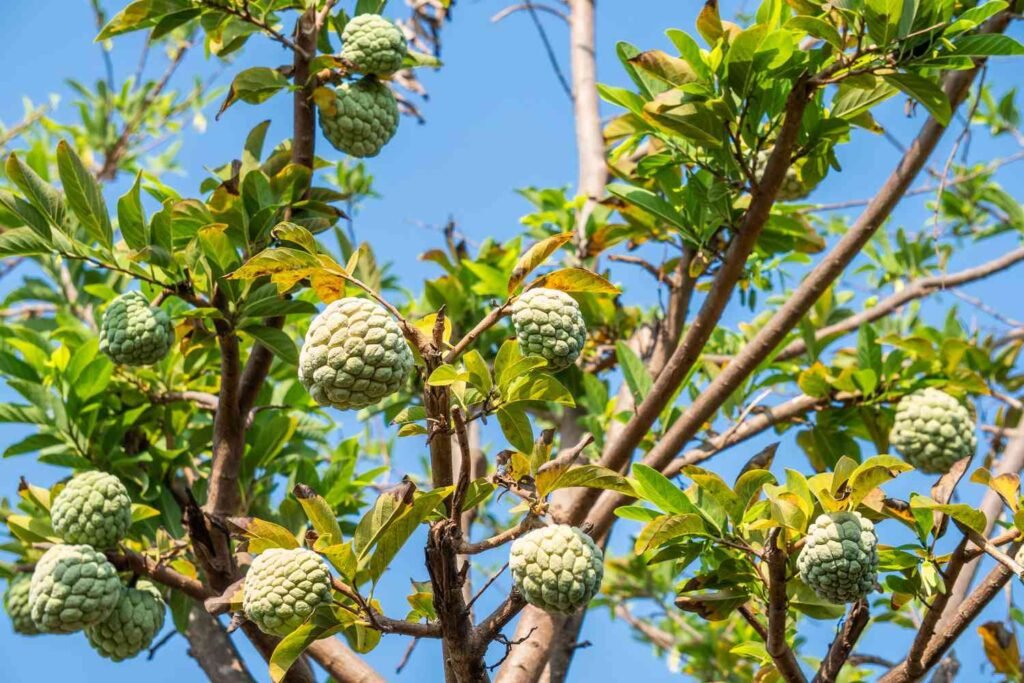
Cherimoya seeds have a hard outer coating that can slow germination. Preparing seeds properly improves success:
- Scarification: Lightly sand the seed coat or nick it with a knife to aid water absorption.
- Soaking: Soak seeds in lukewarm water for 24–48 hours. This softens the seed coat and encourages faster sprouting.
- Optional treatment: Some gardeners soak seeds in a mild hydrogen peroxide solution to reduce fungal risk.
Seed preparation ensures consistent germination and healthy seedlings.
Step 3: Choosing a Germination Medium
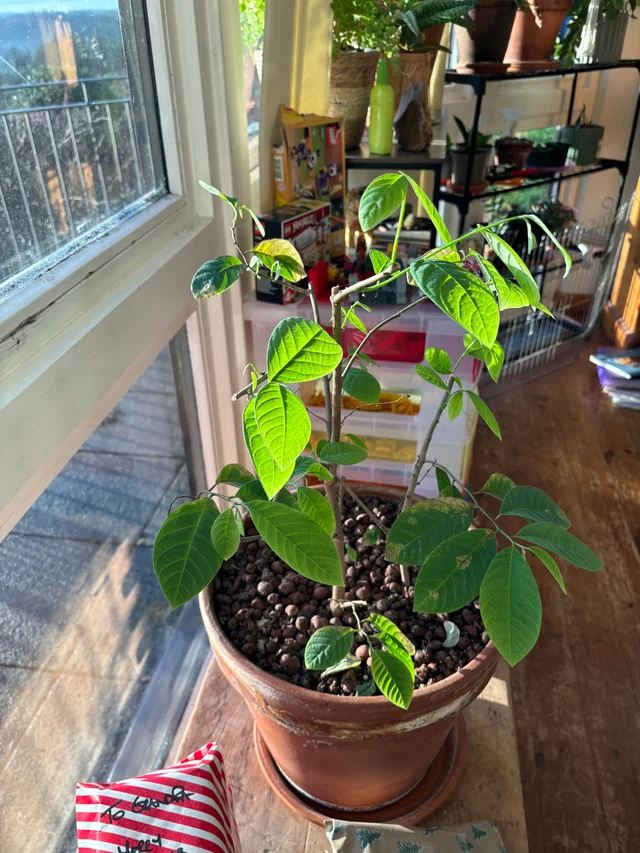
A well-draining, nutrient-rich medium is essential for seed germination:
- Recommended media: Mix equal parts garden soil, sand, and peat moss or coconut coir.
- Sterilization: Use clean soil or heat-treated medium to reduce the risk of pathogens.
- Container: Use seed trays, small pots, or plastic containers with drainage holes.
Proper medium choice promotes rapid germination and strong root development.
Step 4: Planting Cherimoya Seeds
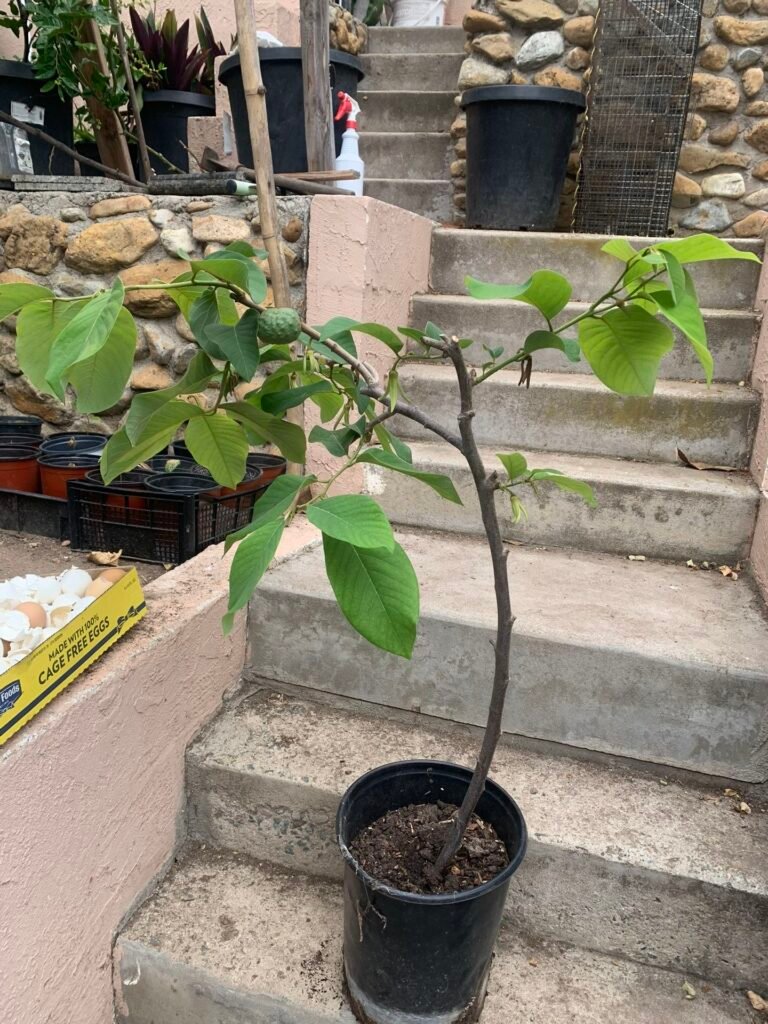
Once seeds are prepared and the medium is ready, it’s time to plant:
- Planting depth: Sow seeds about 1–2 cm deep, with the pointed end facing down.
- Spacing: If planting multiple seeds in a tray, leave 5–7 cm between each seed.
- Covering: Lightly cover seeds with soil and gently firm to remove air pockets.
- Watering: Moisten the soil without waterlogging. Use a spray bottle for gentle watering.
- Location: Place trays or pots in a warm, shaded area with indirect sunlight.
Maintaining consistent moisture and warmth is critical for successful germination.
Step 5: Germination Process
Cherimoya seeds typically germinate within 2–6 weeks, depending on environmental conditions:
- Temperature: Maintain warmth around 20–30°C (68–86°F) for optimal germination.
- Moisture: Keep soil consistently damp but not soggy. Overwatering can cause rot.
- Light: Provide indirect light initially; seedlings can tolerate direct sunlight after emerging.
- Patience: Some seeds may take longer to sprout; germination is gradual.
Signs of germination include the emergence of the radicle (root) followed by the first pair of cotyledons (seed leaves).
Step 6: Caring for Cherimoya Seedlings
After germination, seedlings require careful attention to establish strong roots and healthy foliage:
Watering
- Maintain regular moisture without waterlogging.
- Young seedlings are sensitive to drought and drying soil.
Light
- Gradually expose seedlings to full sunlight to strengthen stems and leaves.
- Avoid sudden intense sun exposure, which can scorch delicate leaves.
Fertilization
- Apply diluted, balanced liquid fertilizer once seedlings develop true leaves.
- Organic compost or worm castings every 2–3 weeks improves nutrient availability.
Pruning
- Remove damaged or weak leaves to promote healthy growth.
- Avoid heavy pruning until the plant is established.
Pest and Disease Management
- Watch for aphids, mites, and fungal infections.
- Use mild organic insecticides or neem oil if needed.
Proper care ensures robust seedlings that can be successfully transplanted later.
Step 7: Transplanting Seedlings
When seedlings reach 15–20 cm in height and have a strong root system, they are ready for transplanting:
Steps for Transplanting
- Choose a pot or garden site: Use large pots (at least 10–15 liters) or a sunny, well-drained garden location.
- Prepare the soil: Enrich with compost, well-rotted manure, or organic fertilizers.
- Transplant carefully: Remove seedlings gently to avoid root damage.
- Planting depth: Maintain the same soil level as in the nursery.
- Water thoroughly: Ensure the soil settles around the roots.
- Mulch: Apply a thin layer of organic mulch to retain moisture and reduce weeds.
Proper transplanting reduces shock and supports rapid growth.
Step 8: Long-Term Care
Cherimoya trees grown from seeds require consistent care to thrive:
Watering
- Young trees need regular watering; mature trees are moderately drought-tolerant.
- Deep watering encourages strong root growth.
Fertilization
- Apply balanced fertilizers 3–4 times per year.
- Organic matter such as compost or mulch improves soil health and tree vitality.
Pruning
- Remove dead, diseased, or crossing branches to maintain tree structure.
- Shape the tree to improve airflow and sunlight penetration.
Pest and Disease Management
- Monitor for pests such as mealybugs, scales, and fruit flies.
- Fungal infections may occur in wet climates; proper spacing and drainage reduce risks.
Step 9: Flowering and Fruiting
Cherimoya trees grown from seeds typically take 3–5 years to produce fruit:
- Flowering: Small greenish-yellow flowers appear in clusters.
- Pollination: Hand pollination is often recommended to increase fruit set, as cherimoya flowers are not self-pollinating.
- Fruit development: Fruits mature in 5–7 months, depending on variety and climate.
- Harvesting: Fruits are ready when they yield slightly to gentle pressure and develop a sweet aroma.
With consistent care and attention, seed-grown cherimoya trees can produce abundant, high-quality fruits.
Tips for Successful Custard Apple Seed Germination
- Use fresh, plump seeds from healthy, ripe fruits.
- Scarify and soak seeds to enhance germination.
- Maintain warm temperatures and consistent moisture during germination.
- Use well-draining, nutrient-rich soil for seedlings.
- Gradually acclimate seedlings to sunlight before transplanting.
- Fertilize regularly with organic or balanced fertilizers.
- Monitor for pests and diseases and act early.
- Be patient—seed-grown trees take time to bear fruit but are rewarding.
Conclusion
Growing cherimoya from seed is a rewarding and cost-effective way to cultivate custard apple trees at home. By selecting healthy seeds, preparing them properly, providing optimal germination conditions, and offering consistent care, gardeners can achieve high germination rates and nurture strong, fruit-bearing trees.
While seed-grown cherimoya trees take longer to fruit than grafted trees, they are highly adaptable, resilient, and provide the satisfaction of growing a tree from seed to harvest. With patience, attention, and proper techniques, anyone can enjoy the creamy, sweet fruits of their own homegrown custard apple trees.
Cherimoya cultivation from seeds not only enriches your garden with a delicious tropical fruit but also offers an educational and sustainable gardening experience that can provide fresh fruits for years to come.
